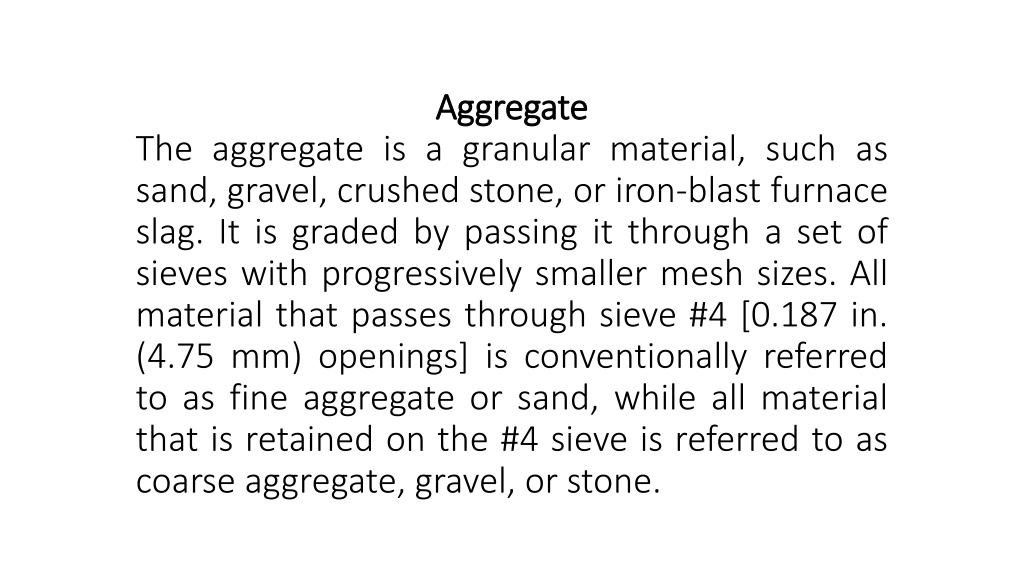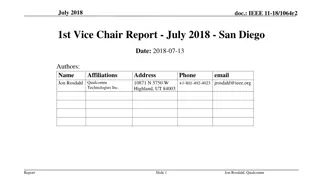
Understanding Aggregates in Concrete Construction
Learn about aggregates in concrete construction, including types, grading, importance, and applications. Discover how careful grading and selection impact concrete properties and quality. Explore the role of aggregates in achieving optimal packing density and improving mechanical properties of concrete.
Uploaded on | 0 Views
Download Presentation

Please find below an Image/Link to download the presentation.
The content on the website is provided AS IS for your information and personal use only. It may not be sold, licensed, or shared on other websites without obtaining consent from the author. If you encounter any issues during the download, it is possible that the publisher has removed the file from their server.
You are allowed to download the files provided on this website for personal or commercial use, subject to the condition that they are used lawfully. All files are the property of their respective owners.
The content on the website is provided AS IS for your information and personal use only. It may not be sold, licensed, or shared on other websites without obtaining consent from the author.
E N D
Presentation Transcript
Aggregate Aggregate The aggregate is a granular material, such as sand, gravel, crushed stone, or iron-blast furnace slag. It is graded by passing it through a set of sieves with progressively smaller mesh sizes. All material that passes through sieve #4 [0.187 in. (4.75 mm) openings] is conventionally referred to as fine aggregate or sand, while all material that is retained on the #4 sieve is referred to as coarse aggregate, gravel, or stone.
By carefully grading the material and selecting an optimal particle maximum packing density can be achieved, where the smaller particles fill the void spaces between the larger particles. Such dense packing minimizes the amount of cement paste needed and generally leads to improved mechanical properties of the concrete. size distribution, a and durability
The aggregate constitutes typically 75% of the concrete volume, or more, and therefore its properties largely determine the properties of the concrete. For the concrete to be of good quality, the aggregate has to be strong and durable and free of silts, organic matter, oils, and sugars. Otherwise, it should be washed prior to use, because any of these impurities may slow or prevent the cement from hydrating or reduce the bond between the cement paste and the aggregate particles.
Applications of Aggregates Applications of Aggregates Used in many civil engineering and construction applications including: Portland cement concrete Asphalt Base materials for roads Ballast for railroads Foundations Plaster, mortar, grout, filter materials, etc.
Important of Aggregates Important of Aggregates Aggregates occupy at least three quarters of volume of concrete. Quality is especially important. Cheaper than the cement, put into the mix as much as possible. Higher volume stability and better durability than the cement paste alone.






















